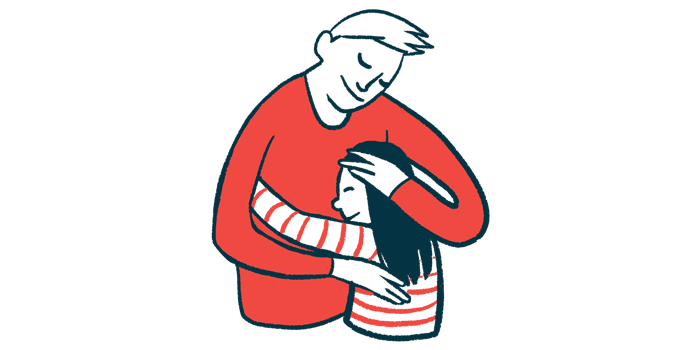Early Vasodilator Treatment, High Mortality Found in Swedish Children

A large proportion of Swedish children younger than 7 who were diagnosed with pulmonary hypertension (PH) started treatment with vasodilators before age 1, and almost all of those treated received Revatio (sildenafil) as a first therapy, according to an analysis of a nationwide prescription registry.
Despite treatment, mortality was high, which is why the scientists said more studies of PH children are needed to understand underlying disease-causing mechanisms and the impact of treatment.
The study, “EXPRESS: Vasodilator therapy for pulmonary hypertension in children: a national study of patient characteristics and current treatment strategies,” was published in the journal Pulmonary Circulation.
Vasodilators are medicines that widen, or dilate, blood vessels. These therapies are used to treat pulmonary hypertension because blood vessels from the heart that supply the lungs narrow and thicken in people with the disease, leading to high blood pressure (hypertension).
Children with PH often are treated with off-label vasodilators that have yet to be approved for this age group. Prescriptions are based on the experience and opinion of the attending physician rather than on evidence from clinical studies.
Given the lack of formal reports, scientists in Sweden investigated vasodilator use in Swedish children with PH by analyzing data collected from 2007 to 2017 from the Swedish Prescribed Drug Register, a database covering all prescriptions.
“The aim of this study was to map nationwide prescription patterns and patient characteristics among young children treated with pulmonary vasodilators in Sweden,” the team wrote.
The analysis included 119 boys and 114 girls younger than 7 who were treated with pulmonary vasodilator medications. Participants were categorized according to PH World Health Organization (WHO) classification groups.
There were 44 (19%) classified as PH WHO group 1, caused by the narrowing of the small blood vessels in the lungs, and six (3%) in group 2, PH due to left heart disease. A total of 108 (46%) were in group 3, PH resulting from lung diseases or a lack of oxygen, and 65 (28%) in group 5, causes of PH that do not fit into the other groups.
Almost half (46%) of the participants were born premature, or before 37 weeks, including 74% of WHO group 3 patients born at a median of 27 weeks. Down syndrome was seen in 18 (8%) children, with heart surgery common in this group (61%).
The most commonly prescribed vasodilator was Revatio, used in 224 (96%) patients from 2007 to 2017. Out 195 children who began this therapy from 2007 to 2016, 125 (64%) were treated for less than one year.
Medications prescribed at the same time included antacids (53%), therapies to treat irregular heartbeat (23%), anti-blood-clotting medicines (18%), diuretics for hypertension (70%), inhaled therapies (71%), and thyroid hormones (6%).
Cardiac catheterization, which uses a flexible tube inserted into a vein and passed into the heart to measure blood pressure, was performed in 91 (39%), comprising 47 of 65 WHO group 5 patients (72%).
The median age at first vasodilator prescription was 7 months, and 61% were treated before the age of 1. This was seen across all WHO groups, especially group 3, with 74% treated that early.
PH causes in WHO group 1 included cardiac shunt, which is a procedure to redirect and improve blood flow, in 73%, while PH by unknown cause occurred in 7%, and persistent pulmonary hypertension of the newborn in 20%.
Bronchopulmonary dysplasia, a form of chronic lung disease affecting newborns, occurred in 76% of those in WHO group 3, plus 19% with diaphragmatic hernia, a birth defect in which there is a hole in the diaphragm. Congenital heart defect (CHD) was the predominant cause of PH in WHO group 5 (92%). Overall, 156 of the 233 patients (67%) had a CHD diagnosis, of whom 50% had undergone heart surgery.
Other treatments prescribed other than Revatio included Tracleer (bosentan) in 29 (12%), Ventavis (iloprost) in 14 (6%), Opsumit (macitentan) in four (2%), Remodulin (treprostinil) and Adempas (riociguat), each in two participants (1%).
Most children were treated with one vasodilator (87%), while 13% received multiple medications. Treatment with one medication (monotherapy) was most common at 88%, while 10% received two therapies and 2% with triple therapy.
Only Revatio, Tracleer and Ventavis were used as monotherapies. Secondary therapies to these medicines were always Opsumit, Remodulin, and Adempas. During the study, prescriptions of Revatio increased, while Tracleer and Ventavis remained constant. Opsumit, Remodulin, and Adempas were first prescribed in 2014 and were prescribed only sporadically at the end of the study.
Overall, 30 (13%) participants died with a median age at death of 2 years. In WHO group 5 with CHD, the mortality was 20%, the highest across WHO groups over time. Most patients who died received monotherapy (80%), but in those treated with triple therapy, the mortality rate was high at 60% (three of five).
“In conclusion, this study provides an unbiased overview of national outpatient use of pulmonary vasodilator therapy in children younger than 7 years-of-age at treatment initiation,” the scientists wrote.








